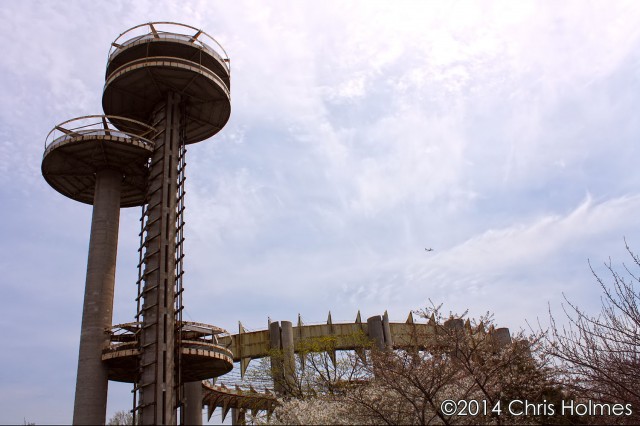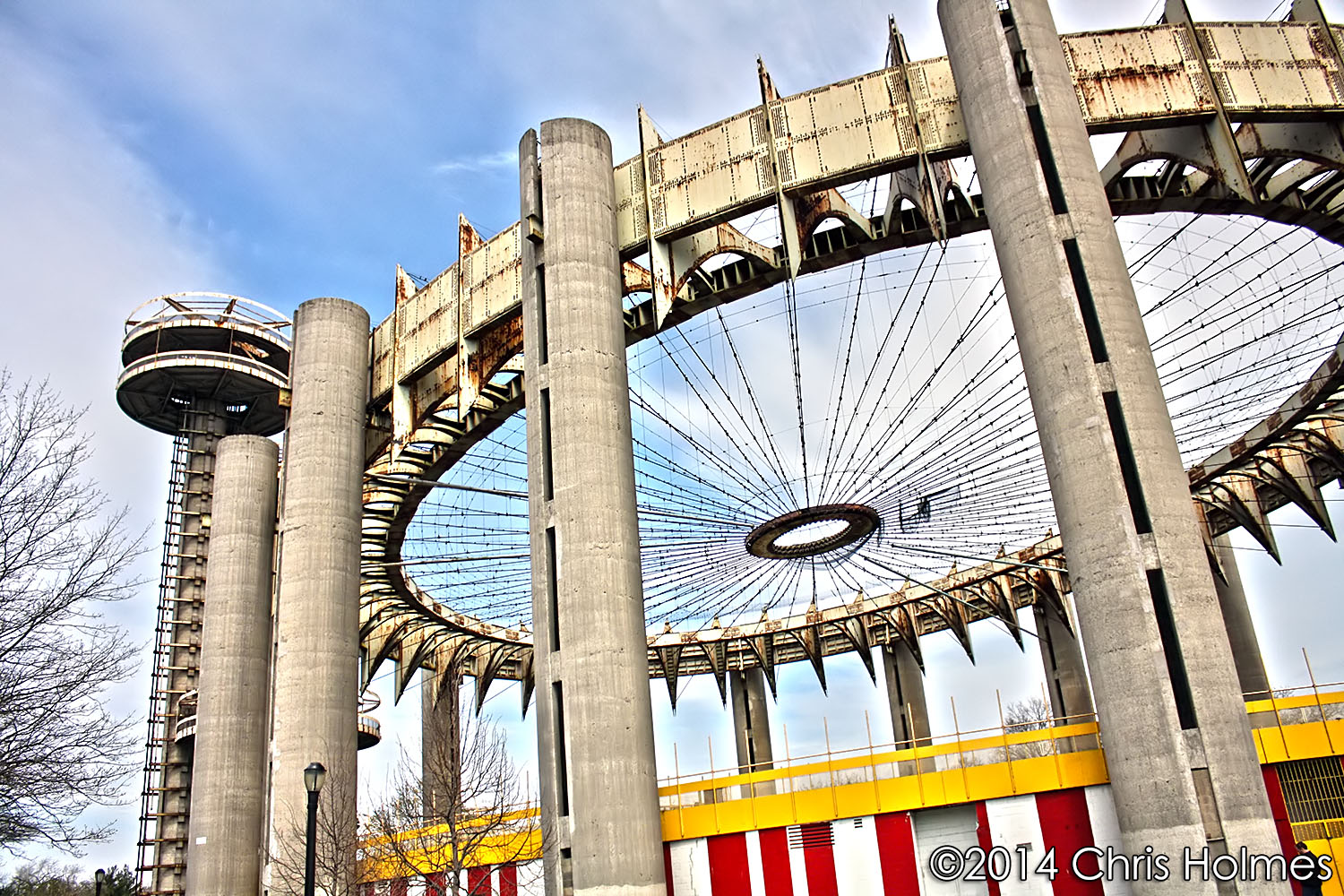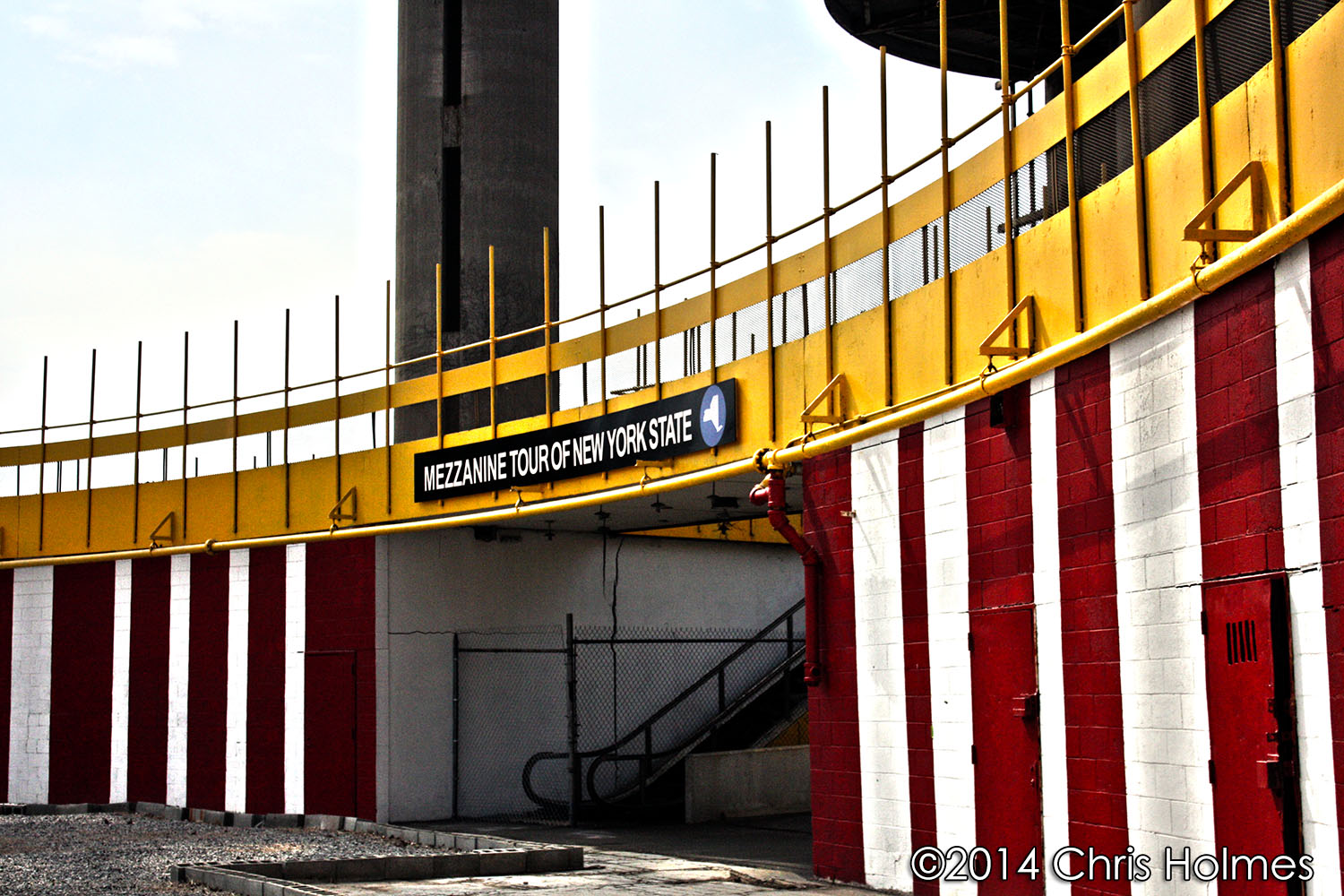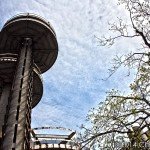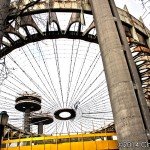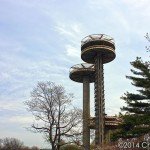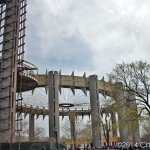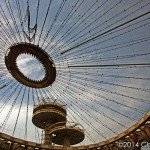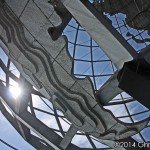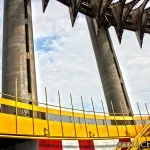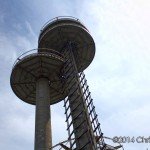
The New York State Pavilion Gets Its Day in the Sun
I was not born until a decade after the 1964-65 New York World’s Fair ended, so I’ve only ever been able to experience it through home movies, photographs, and postcards. Having never attended a World’s Fair in the United States — the last of which was held in 1984 — it’s always been a little difficult to understand the spell that those events cast over millions of Americans in the 20th century.
 The most visible remnants of that once-glittering spectacle in Queens are the Unisphere, which sits a stone’s throw from Citi Field, and the New York State Pavilion. The Pavilion, actually comprised of three distinct elements — the Tent of Tomorrow, a trio of concrete observation towers, and the Theaterama — has been abandoned since the 1970s, its metal portions rusting and its paint fading. (Theaterama has since found new life as the home of the Queens Theatre.)
The most visible remnants of that once-glittering spectacle in Queens are the Unisphere, which sits a stone’s throw from Citi Field, and the New York State Pavilion. The Pavilion, actually comprised of three distinct elements — the Tent of Tomorrow, a trio of concrete observation towers, and the Theaterama — has been abandoned since the 1970s, its metal portions rusting and its paint fading. (Theaterama has since found new life as the home of the Queens Theatre.)
Derided by many as the object of Baby Boomer nostalgia at best and a vulgar eyesore at worst, there would seem to be little reason why someone my age should even care whether it gets torn down or not.
And yet, when I read last month that the Pavilion was going to be opened to the public for just a few hours, to commemorate the 50th anniversary of the 1964-65 New York World’s Fair, I didn’t even hesitate to schedule a day off for my own personal pilgrimage.
(For a full set of photos, check out my New York State Pavilion Flickr album from the day.)
The announced opening time for the Pavilion was 11am, and the plan was to stand in line for a bit, get a ticket, then mosey into the Tent of Tomorrow and snap some photos. I had a ticket to a 3pm presentation at the Queens Theatre by World’s Fair expert Bill Cotter, and I wondered how I was going to kill the few hours I had left after visiting the Pavilion.
I had no idea how many people would show up for the day’s events. It was of major interest to me and it was a beautiful spring day, but it was also in the middle of the day on a Tuesday. I figured on a crowd of maybe 500 tops.
And then I saw the line.
Even arriving at the park 15 minutes before the opening, there were already more than 1,000 people in front of me. I know I wasn’t the only person to joke that the line snaked all the way into Brooklyn, but it sure seemed like it. Woe to those who showed up late.
Fortunately, owing to the special nature of our gathering and the nice weather, all around seemed to stay in good spirits.
Still, by the time I got within throwing distance of the observation towers I had already been on line for more than two hours. Fortunately, this rather leisurely pace afforded me ample opportunity to study the structures and lament their decay.
As I rounded the Tent of Tomorrow toward the entrance gate I had the chance to appreciate the fruits of the very hard work put in by the New York State Pavilion Paint Project, a small volunteer group that has been refreshing the lower portion of the Tent of Tomorrow for several years.
Finally, as the clock closed in on 1:30, I received my ticket! But all this meant was that I had a spot in the queue. I was told that I could expect my number to be called by around 3pm.
It was at this point that I began to understand just how popular the re-opening really was, and how much the hard-working volunteers had underestimated the Pavilion’s enduring appeal (this is no criticism, however). I heard through the grapevine that in the end more than 2,500 people had shown up for a glimpse of the Pavilion, and the event organizers had no choice but to start turning some of them away.
So with another 90 minutes or so to kill, I decided to grab some lunch. But, probably owing again to the greater than expected turnout, the only places to grab food that I could spot were a Belgian waffle truck, a hot dog cart, and an ice cream truck. It wasn’t until a little while later that I found out about the snacks and drinks for sale inside the Queens Theatre. D’oh!
A few dirty water dogs later, I felt refreshed and ready to stroll down the path to see the iconic Unisphere. Even though the water fountain basin was dry and the surrounding trees and flowers weren’t all in full bloom, I couldn’t help but be impressed the site of the 12-story steel globe up close.
Finally, more than four hours after I arrived, my group’s ticket numbers were announced. So I strolled through the north gate, grabbed a hardhat, and soaked in the history of this once magnificent building.
Of course, to the casual observer the Pavilion probably looks less like a piece of cultural history and more like a rusted old hulk with no discernible reason to exist. Aside from the refurbished paint, little of note remains from the Fair days other than some preserved pieces of the 9,000-square-foot terrazzo Texaco floor map of New York State.
As for myself, however, all my mind could do was keep filling in the pieces of what once was — the brilliantly colored glass ceiling tiles covering the Tent of Tomorrow, the Sky Streak elevators in the observation towers, and the floor map in its full glory for starters. I began to feel a bit sad over what has been lost, but hopeful at the same time that so many people still cared about it.
After I was satisfied that I had taken enough pictures, I headed down to Bill Cotter’s presentation (albeit almost an hour late). It seems I missed roughly half of his talk, but what I did see was fascinating. The Pavilion has a great ambassador in Bill, among others.
When I emerged from the theater and prepared to journey home, the sky had clouded over and a light rain had begun to fall. I can’t help but feel there was some symbolism in that. The New York State Pavilion had its day in the sun, but the gray clouds returned once again cast a pall over it.
My hope, and I know that it’s the hope of thousands of other World’s Fair enthusiasts and history buffs, is that one day the Pavilion will be allowed to shine for good.
More photos…
- Inside the Pavilion.
- Outside the Pavilion.
- Outside the Pavilion.
- Outside the Pavilion.
- Outside the Pavilion.
- Outside the Pavilion.
- Remnant of the original terrazzo map of New York State.
- Inside the Pavilion.
- Outside the Pavilion.
- The Unisphere.
- Inside the Pavilion.
- Remnant of the original terrazzo map of New York State.
- Outside the Pavilion.
- The Unisphere.
- Outside the Pavilion.
- Outside the Pavilion.
- Inside the Pavilion.
- Inside the Pavilion.
- Remnant of the original terrazzo map of New York State.
- Inside the Pavilion.
